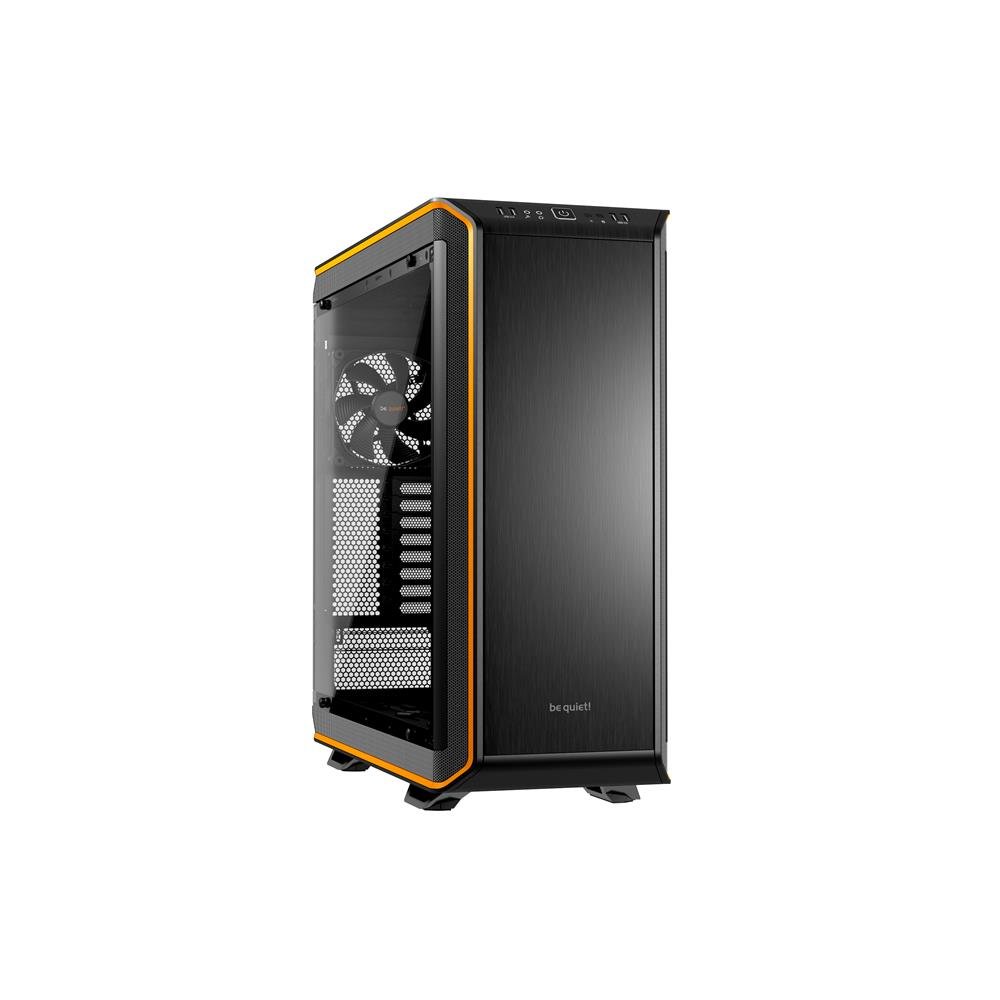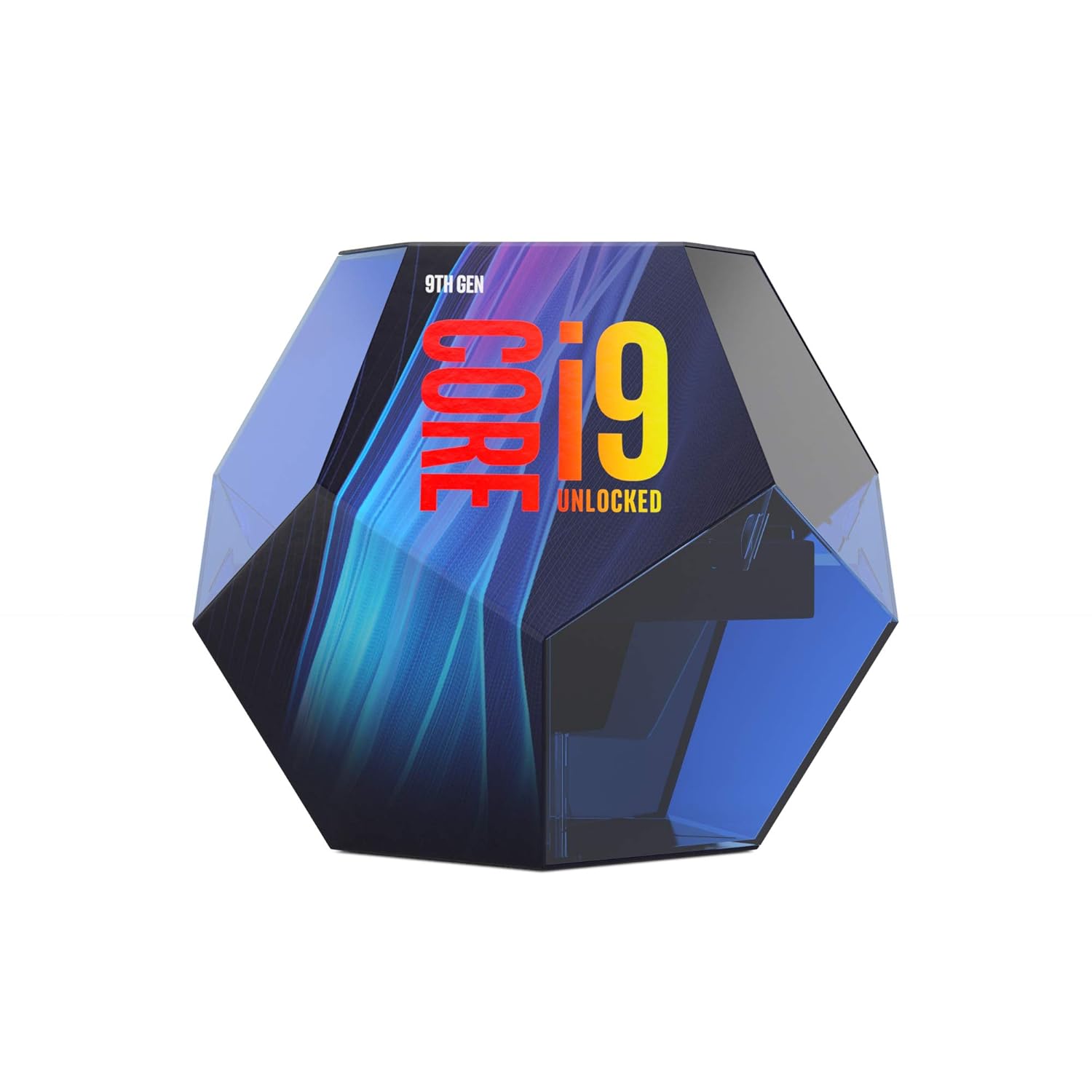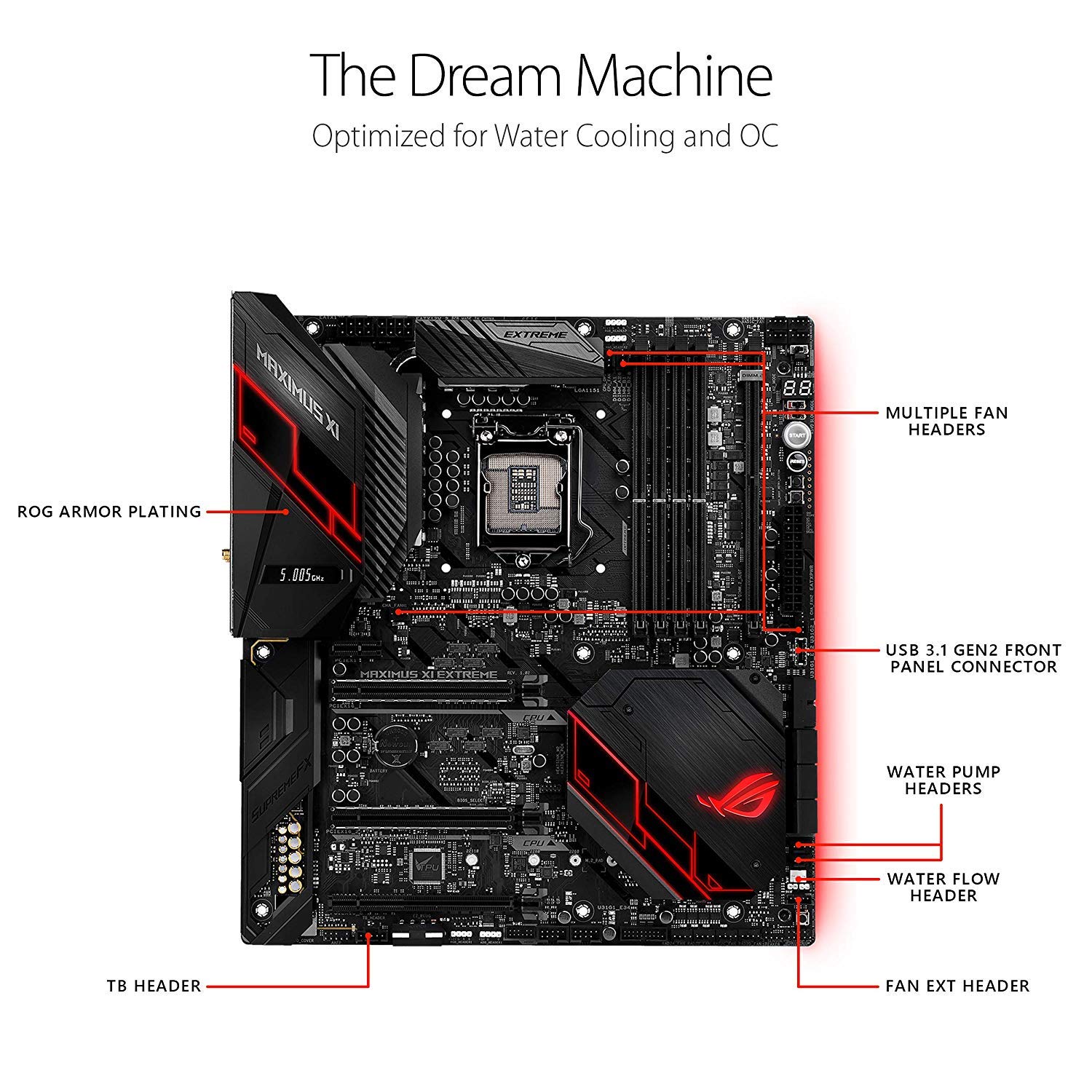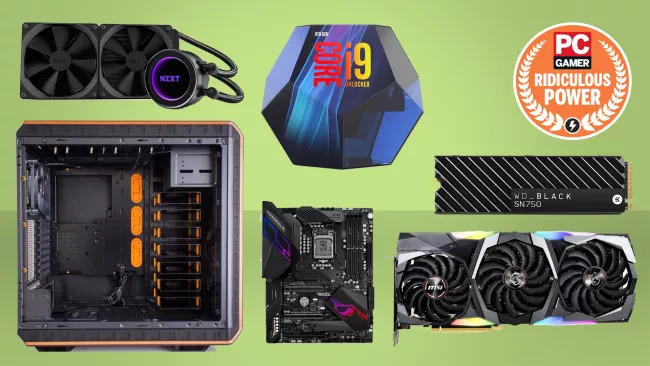If you’re looking for a machine that has the power to take on any modern game on the highest graphical settings with no compromises, then this extreme gaming PC build may be just what you need. You probably don’t need to be told that this build isn’t cheap—it takes the best CPU for gaming as well as the best graphics card and squeezes the best possible performance out of both. Handling those high-end components might seem a little daunting if this is your first build, so you might want to have a look at our guide on how to build a gaming PC before you go any further.

This extreme gaming PC build aims to squeeze every last frame out of your set-up and will allow you to stream or record your gameplay without issue too. But we all know that even the most expensive PC components won’t remain viable indefinitely. Because of this, we’ve left a little bit of room for improvement, and you can rest assured that the case, power supply, and motherboard—generally the most difficult components to switch out—have been chosen specifically to allow room for any future upgrades.
It’s often tempting to just throw money at a new PC build, especially if you’re going for something high-end. Picking up an extra graphics card or adding more RAM is undoubtedly an option, but there does come the point where the cost will far outweigh the gains. We are building an extreme gaming PC, and as it is, this build will cost you just over $3,000 and will push a solid 60fps and beat that at 1440p. If that price seems a little too extreme for your budget, you might want to take a look at our high-end PC build guide instead.
As with our other PC build guides, it’s worth remembering that the $3,000 we’ve allowed doesn’t include any peripherals or accessories. You’ll need to put extra cash aside for your OS, monitor, or anything else you might need or be thinking of upgrading. If you need to find ways to cut down the cost slightly, you could go for a smaller SSD or slightly slower RAM, both of which are easy to upgrade at a later date when you have more cash.
Processor:

Intel Core i9-9900KS
“The fastest consumer CPU“
Cores: 8 | Threads: 16 | Base Clock: 4.0GHz | Turbo Clock: 5.0GHz | Overclocking: Yes, 4.9-5.0GHz typical | L3 Cache: 16MB | TDP: 127W | PCIe 3.0 lanes: 16
The 9900KS is the current front runner in terms of performance when it comes to the best CPUs for gaming; the only reason it doesn’t currently occupy our top slot is the cost. It does achieve 5Ghz on all cores, making it the fastest LGA1151 platform CPU, but ultimately is only about 300MHz faster than the 9900K.
While we wouldn’t necessarily recommend the 9900KS at its current price point, our extreme gaming PC build isn’t about to pull any punches. It costs about $90 more than it’s the closest competitor, the 9900K, but only offers a slight improvement in terms of performance. While it is indeed the superior processor, it’s a problematic recommendation for all but the most decadent of gaming rigs.
Motherboard:

Asus Maximus XI Hero Wi-Fi
“The board that does it all“
Chipset: Z390 | Memory: (4) DIMM, 64GB, DDR4-4400 | PCIe slots: (2) x16 (x16 or dual x8), x16 (x4), (3) x1 | Video ports: HDMI, DisplayPort | USB ports: USB ports: (8) rear IO, (7) internal | Storage: (2) M.2, (6) SATA | Network: Ethernet, 866Mbps 802.11ac | Lighting: Heatsink RGB, (2) Aura RGB, (2) addressable Aura
If the CPU is the brains of your new PC, the motherboard is the nervous system and other vital organs that keep things running smoothly. Skimp on a motherboard at your peril—especially when using multiple graphics cards.
The Asus ROG Maximus XI Hero Wi-Fi comes with a Z390 chipset, which means it’s primed to handle Intel’s 8th and 9th gen cores. Its redesigned 5-way optimization overclocks based on thermal telemetry. It also has 802.11ac 2×2 MU-MIMO Wi-Fi, so you won’t have to buy a separate card. There are tons of USB slots, and, of course, its RGB lighting works with a bunch of Aura Sync compatible peripherals. The only thing missing is a third M.2 slot.
Other Asus motherboard models are a step up from this one, but not enough to justify the jump in cost. The Asus ROG Maximus XI Hero Wi-Fi sits at a stable $280 at the moment, but you can give yourself a small discount if you purchase the same motherboard sans Wi-Fi.\
Graphics Card:

GeForce RTX 2080 Ti
“The fastest graphics card for 4K, ray tracing, and everything else“
GPU Cores: 4,352 | Base Clock: 1,350MHz | Boost Clock: 1,545MHz | GFLOPS: 13,448 | Memory: 11GB GDDR6 | Memory Clock: 14GT/s | Memory Bandwidth: 616GB/s
More than anything else in an extreme gaming PC, the graphics card—or cards—matter. In sticking with our ‘not entirely insane’ mantra, we’ve elected to go with a single RTX 2080 Ti rather than two, because one will get the job done just fine. If you want two RTX 2080 Tis, you’ll need an NVLink bridge, and the only thing to worry about here is whether the games you play support SLI.
We’ve intentionally left the specific model of GTX 2080 Ti up to the user because all of the 2080 Ti cards fall within a narrow performance spectrum. For an SLI build, some people prefer blower coolers that vent heat out of the case, while others are fine with large open-air coolers, and still others like liquid cooling and will want a hybrid card. All of those are viable options, though the more large open-air coolers often keep temps and noise lower than blowers (provided you have a large case with other fans helping out).
Overclocking is possible with any of the 2080 Ti cards. If nothing else, you should use EVGA’s Precision X OC software or MSI’s Afterburner to increase the power limit of your GPU to the maximum. In essence, it’s a quick and easy way to add an extra 5-10 percent to gaming performance overstock.
Memory:

G.Skill 32GB TridentZ DDR4-3200 RGB (4x8GB)
“Gobs of RAM for video editing, gaming, and more“
Capacity: 4x8GB | Speed: 3200MT/s | Timings: 16-18-18-38 | Voltage: 1.35V
You could definitely put more memory into this build (up to 64GB), but for gaming 4x8GB DDR4-3200 is more than sufficient. There are many memory options, and speed is more about bragging rights than actual performance, but we love the look of G.Skill’s TridentZ RGB sticks. RAM prices are also coming down, and have been steadily dropping through 2019. That means a 32GB kit can be had for under $300 again. If you prefer some other brand, there are many options.
Besides G.Skill, we recommend Corsair, Kingston, HyperX, Crucial, Adata, and Team as safe picks. RAM has reached the point where most modules work well, so it’s often a question of price—and color, if that’s your thing—rather than minuscule performance differences. Higher clocked DDR4 might add a percentage point to the overall performance, but the money is usually better spent on a faster CPU or GPU, or a larger SSD. Unless you’re going for record overclocks, in which case go nuts on the fastest DDR4 you can find.
Primary Storage:

WD Black SN750 2TB NVMe SSD with Heatsink
“INCREDIBLY FAST STORAGE AND PERFORMANCE“
Capacity: 2,048GB | Interface: M.2 PCIe | Sequential IO: 3,400/2,900MB/s read/write | Random IO: 480K/550K IOPS read/write
An extreme build is going to require the fastest NVMe SSD you can get, and maximum capacity when you need it. The WD Black SN750 2TB is a powerhouse with a custom heatsink that’s designed for sustained usage, to keep it from running hot. It’s also available in 2TB, which the equally fast Samsung Pro 970 is not (that only comes in 1TB, currently).
The included software allows a Gaming Mode that’ll keep the SSD from entering into low-power mode, assuring you never get a dip in performance. This means you’ll massively cut download times in games, which is essential for the impatient gamer. It costs close to $500, sure, but you’re getting one hell of a storage drive for that price.
Mass Storage:

Samsung 860 Evo 4TB SATA
“Tons of speedy space for your games, movies, and more“
Capacity: 4,096GB | Interface: SATA | Sequential IO: 550/520MB/s read/write | Random IO: 98K/90K IOPS read/write
Yeah, only 4TB of SATA storage for the secondary drive. We were trying to be somewhat reasonable, but you could always double down (or even go with four drives) and run the drives in a RAID set. Treat yourself.
In testing, the 860 Evo 4TB is as fast as it gets for SATA storage. You could always add a few 10TB HDDs as well, but we’d personally recommend a good NAS with 10GbE rather than adding HDDs to your main PC—because spinning disks are the opposite of extreme performance.
Power Supply:

Corsair AX1500i
“Enough power for overclocking and then some“
Output: 1,500W | Efficiency: 80 Plus Titanium | Connectors: (1) 24-Pin ATX, (2) 8-Pin (4+4) EPS12V, (10) 8-Pin (6+2) PCIe, (20) SATA, (12) Molex, (2) Floppy | Modular: Fully
A wise man once told us never to underestimate the power of the dark supply. Or something like that. The point is, you don’t want a crappy PSU taking down the rest of your rig, and when you’re putting together the best PC possible, that means getting equally bodacious power supply. The top of the heap is 80 Plus Titanium, and it may be some time before we see anything more efficient.
When it comes to power supplies, the Corsair AX1500i is one of the best around, with an entirely digitally controlled design and monitoring software as a bonus. But that’s not the main selling point, which is the 1500W of clean power at up to 94 percent efficiency. And you’ll need most of that, as the i9-7900X and motherboard can draw around 400W under load, and each GTX 1080 Ti is 250W—more if you run the CPU and GPU overclocked, which is sort of the point of an extreme build.
If you only plan to run a single GPU, or a lower-tier CPU (like the i7-7800X), EVGA’s SuperNOVA 850 T2 is a great alternative that will save some money. If you want to save even more, the SuperNOVA 850 P2 costs about $50 / £50 less and is every bit as good. But saving money isn’t the objective here.
Case:

be quiet! Dark Base Pro 900
“A big and beautiful case to show off your build“
Form Factor: Full tower | Motherboard Support: E-ATX, XL-ATX, ATX, M-ATX, Mini-ITX | Dimensions: 577 x 243 x 586 mm | Weight: 14.39 kg | Radiator Support: 120mm; 140mm; 240mm; 280mm; 360mm; 420mm | I/O Ports: 1 x Audio/Mic, 2 x USB 3.0, 1 x USB 3.1 Gen 2 Type C, Qi Wireless Charger | Drive Bays: 2.5”: 10, 3.5”: 5
One of being Quiet!’s newer cases, the Dark Base Pro 900 remains one of our most highly recommended full towers thanks to its sleek design and enthusiast-friendly interior. One of the most modular cases we’ve ever seen, just about every single panel can be removed, making this case a modder’s dream. There’s also a whole lot of customization available, with options for an inverted motherboard layout and even some nifty features like wireless qi charging for your cellphone and preinstalled LED lighting.
The Dark Base Pro 900 is large enough to support the biggest motherboards and radiators up to 420mm in size. It’s a huge full tower that can help just about any custom cooling you can dream up. It also looks very sleek with a few color options to spice things up and enough bells and whistles to make it worth the outlay.
CPU Cooling:

NZXT Kraken X62
“Substantial cooling for your Core i9 processor“
Size: 280mm | Fan speed: 1,200rpm | Airflow: 55.4 CFM | Noise level: 20.4 dB(A) | Dimensions: 315x143x29mm | Socket support: LGA115x, LGA2011, LGA2066, AM2, AM3, AM4
This rig has a beastly CPU, and yes, it needs overclocking. Liquid cooling is highly recommended when you’re trying to get the most out of Intel’s unlocked enthusiast chips, and the new 9th Gen Core i9 processors require it.
The NZXT Kraken X62 is an impressive piece of kit and works with all major platforms. It’s reasonably easy to install and features a large 280mm radiator with a pair of 140mm fans. Once everything is installed, having a small water block on your CPU instead of a massive air cooler makes things look much cleaner. You’ll need a large case capable of housing the radiator, naturally, which we already took care of above.
But even with the X62, you may run into thermal limitations. If you’re serious about pushing the i9-9900K to its limits, you’ll want to consider going with a fully custom liquid cooling loop. That’s beyond the scope of this buying guide, but know that even a good AIO cooler likely won’t allow maximum overclock with the i9-9900K.

